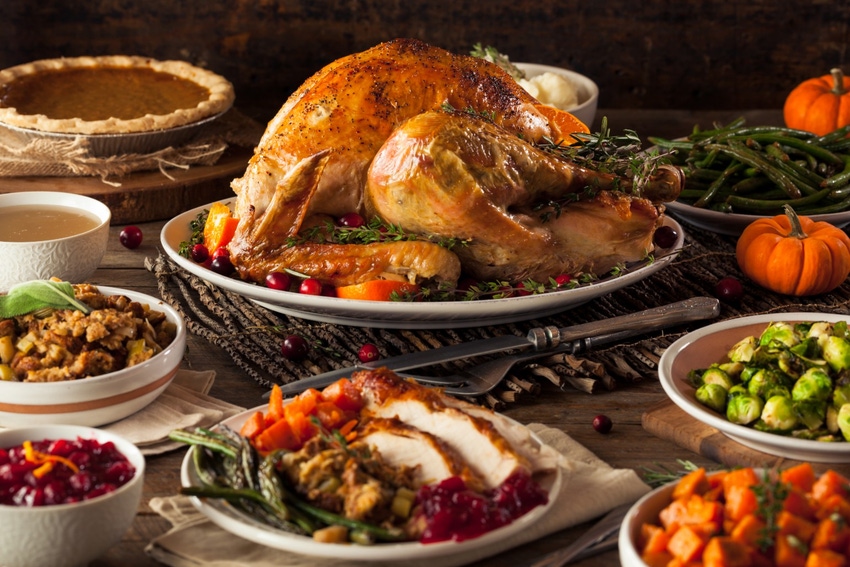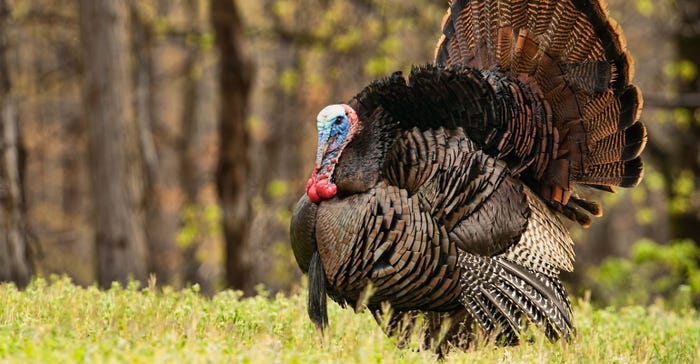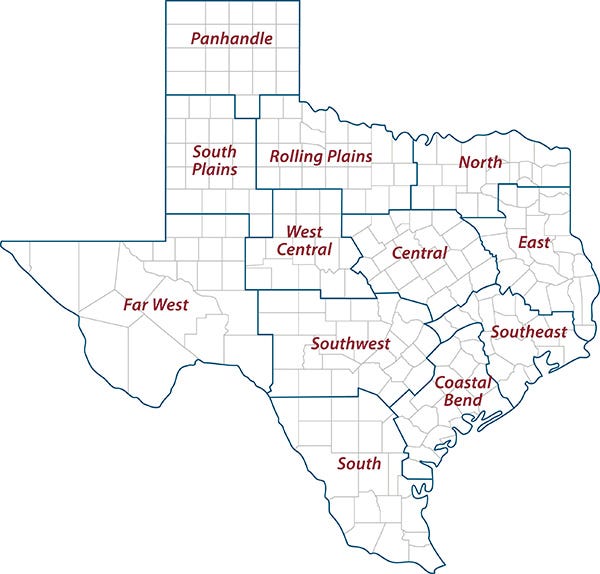
Turkey producers rely on the holiday season’s peak sales for traditional meals like this whole roasted turkey with stuffing and sides. Wholesale prices are higher this year as storage and production numbers declined.
The price for wholesale, whole turkeys is higher this year as producers grapple with the ups and downs of marketing during the holidays, according to a Texas A&M AgriLife Extension Service expert.
Turkey sales typically peak leading up to Thanksgiving through Christmas as consumers prepare traditional holiday fare, including whole birds, said David Anderson, AgriLife Extension economist, College Station.
But turkey producers’ failure to find profits during the holiday sales spike in recent years has them adjusting to consumer trends with fewer birds, lower weights and shrinking storage supplies, Anderson said.
“Typically, we’re producing whole birds for Thanksgiving and building up stocks in cold storage,” he said. “Cold storage stocks usually build up until August and then begin declining as they move to stores. But that isn’t the case this year.”
Tough time for turkey
As of September, whole-bird turkey cold storage levels were down 5% compared to a year ago, according to the U.S. Department of Agriculture. A deeper look into the numbers showed cold storage of hens were up 9.5% compared to toms, which were down 15.5%.

Turkey producers rely on the holiday season’s peak sales for traditional meals like this whole roasted turkey with stuffing and sides. Wholesale prices are higher this year as storage and production numbers declined.
Fewer turkeys in storage are a result of declining production as turkey producers continue to struggle balancing supplies with demands. Anderson said whole turkeys are also facing increased competition from other holiday protein options like prime rib, brisket or some other celebratory dish.
Anderson said he believes the numbers and weights are good indications producers may be trying to keep production under control for the opportunity of better prices at market.
Wholesale, whole turkey prices are better for producers this year compared to last year – 96 cents per pound vs. 80 cents, respectively, Anderson said. But prices are 20% below the five-year average.
“Producers have struggled with changing consumer demand for several years,” he said. “Profits have been in short supply. Each year they have an idea how many whole turkeys they will need. But what if fewer people buy turkeys and go with another option?”
Anderson said turkey producers are looking for more stable, year-round offerings to adapt to consumer trends. Turkeys have been a popular deli meat option, and ground turkey has been growing as an alternative to beef.
“Consumers may see higher retail prices,” he said. “But many grocers will run specials on whole turkeys to try to get you in the store in the hopes you buy the dressing and butter and other items for holiday meals and family get-togethers.”
AgriLife Extension district reporters compiled the following summaries:

Texas A&M AgriLife Extension Districts
CENTRAL: Temperatures were below normal, and some rain was received. Drought continued to hurt pasture and crop conditions in some areas. Winter finally hit hard, and summer grasses went dormant. A lot of wheat acres were planted amid good soil conditions and weather. In other areas, very little small-grain fields were planted, and very few of those survived. Winter annuals looked good in a few areas, but the hard freeze may have stunted oats and wheat. A few cotton fields were left to finish harvest. Cattle were in good body condition with producers feeding hay.
ROLLING PLAINS: Harvest was in full swing. Cow/calf producers were supplementing grazing with hay and protein. Wheat planting was nearing completion in most areas.
COASTAL BEND: A wet cold front brought much-needed precipitation that improved soil moisture levels. Wet conditions slowed or halted fieldwork for most of the district. Moisture was beneficial to winter pastures. Cool-season forages emerged and appeared to be in good shape. Some areas reported winter rye, wheat and oats were planted with lower than normal oat acreage. Producers were gearing up to fertilize fields. Livestock auctions showed large runs of weaned calves and cull cows. Cattle remained in good condition. Many producers were feeding hay and protein due to a light frost. Pecan harvest continued with good yields reported by managed orchards. Yields were hit or miss on pecan orchards that were not irrigated and diseases and pests were not addressed properly.
EAST: Rain fell across much of the district, aiding winter pasture growth. A few producers were finishing up their last cutting of hay. The early frost caught many producers off guard. Producers in many counties were feeding hay as well as energy and protein supplements. Pasture and rangeland conditions were fair. Subsoil and topsoil conditions remained adequate. Livestock were in fair to good condition. Shelby County reported low cattle prices with increased numbers at the sale barn. Anderson County reported cattle prices were up. Wild pigs continued to cause an increasing amount of damage across the district, with damage reported to be at an all-time high.
SOUTH PLAINS: Conditions were cold and wet. Temperatures ranged from a low of 14 degrees to a high of 80 degrees. A few counties received 2-5 inches of rain. Many tanks were filled by runoff water. Rain delayed harvest of remaining cotton. Some cotton was already turned in for insurance and shredded. Rangeland and winter wheat were in fair condition. Cattle were in good condition, but extreme temperature swings could stress them.
PANHANDLE: Most corn was harvested. Soybeans were harvested in northern areas. Cotton was in fair condition, but winter weather delayed harvest. Subsoil and topsoil were adequate in the northern areas and short in southern areas. Pastures and rangelands were in fair condition. Winter wheat was planted, and most fields had emerged across the district.
NORTH: Topsoil moisture levels were mostly adequate to surplus. A cold front delivered lower temperatures and rain. Rain totals ranged from 1-3 inches with isolated locations reporting up to 4 inches. The rain should help winter grasses. Wheat and oat fields looked saturated and needed a break from the moisture. Producers were way behind on winter pasture growth because most fields were replanted. A freeze made summer grasses go dormant. Stocker operators were hauling hay. Most cow/calf producers had weaned their calves. Some cattle went straight to market, and some producers elected to put their calves in a dry lot with hay and supplements. Weaned calf weights were above average, but the cattle market was still not very good. Producers were reporting cattle market prices were hurting their operations. Wild pig damage in some fields, especially near oak trees, was still an issue.
FAR WEST: Temperatures ranged from the low 80s to the upper 20s. Rain showers were reported over most of the district with amounts between 0.5-2 inches. Precipitation shut down harvest in many areas. The bigger issue for most producers was the extremely high humidity. Winter wheat and oats for grazing were still coming up strong. Pima and upland cotton were being harvested. About 75% of cotton was sprayed, stripped or at the gin. Pima yields were above average. Upland fields looked decent, but some late growth on top was not opening. A fire at the compress in Stanton burned about 12,000 bales of cotton. Pecans were beginning shuck splitting and slowly being harvested, but some were experiencing rain delays. Western Schley pecans should be harvested in the next few weeks if weather and temperatures cooperate. Most growers were waiting until trees shed more leaves and husks opened. Cattle were in overall good condition. Ranchers were busy moving cattle to pastures.
WEST CENTRAL: Weather was nice and warm before turning wet and cooler. The rain should help, but more was needed to get wheat germinated and emerged. Cotton harvest was about 50% complete, but delays were expected in wet areas. A frost may not have been good for pecans, which were a bit late. Cattle prices were steady except for stockers in ideal condition, which were $3-$5 higher per hundredweight. Supplemental feeding of livestock increased.
SOUTHEAST: Temperatures were cold, and a hard freeze was in the forecast. Topsoil was drying after the past few weeks of rainfall. Cool-season forages were emerging well. Rangeland and pasture ratings were fair to poor with good being most common. Soil moisture levels were adequate to short with adequate being most common.
SOUTHWEST: A strong cold front brought freezing temperatures and light accumulations of sleet and snow across some areas. Soil moisture conditions continued to improve with some areas receiving 2-4 inches of rain. Rains should help rangeland and pasture conditions. Winter pastures looked good. Winter wheat and oat plantings were wrapping up. Producers were providing supplemental feed to livestock. Overall, livestock and wildlife were in fair condition.
SOUTH: Most areas reported mild weather and adequate to short soil moisture levels. Maverick County reported daytime temperatures around 85 degrees. Eastern areas reported short to very short soil moisture. A freeze was reported in some northern areas. Some areas received scattered rains. Most of Jim Wells County received up to 1 inch of rain with some areas reporting 3-4 inches. Duval County reported 0.5-2 inches of rainfall. Native ranges and improved pastures improved where rain fell, but freezing temperatures hit grasses and forbs. Grazing conditions continued to decline in dry areas. Cattle producers were providing supplemental feed. The lack of rainfall was hurting the cattle industry. Most producers continued to cull herds amid poor market prices. Many areas were still way behind annual rainfall amounts. La Salle reported receiving 11 inches of rain so far and that typical annual amounts were 25 inches. Coastal Bermuda grass fields were not producing hay, and vegetables were mostly harvested. Cabbage and spinach fields made good progress in response to colder temperatures. Baby leaf spinach harvest was expected to begin soon.
Source: is AgriLife TODAY, which is solely responsible for the information provided and is wholly owned by the source. Informa Business Media and all its subsidiaries are not responsible for any of the content contained in this information asset.
About the Author(s)
You May Also Like




